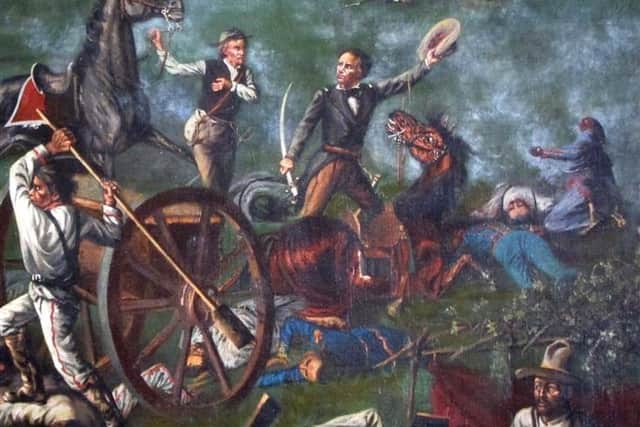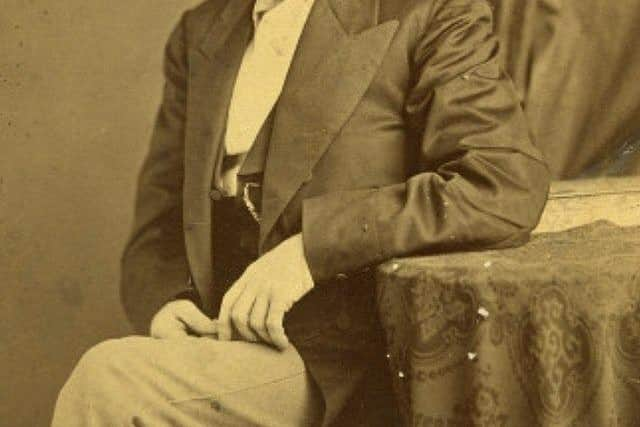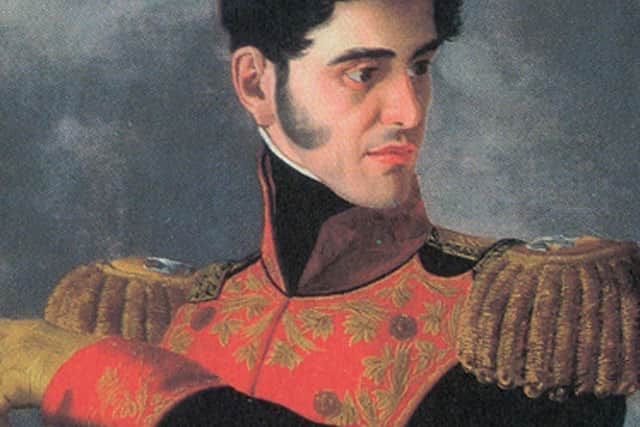Belfast artist painted war won by Yellow Rose of Texas
and live on Freeview channel 276
Further recollections follow soon, but today, a very different war, country and era - but more than a few local links.
Belfast-born artist Henry Arthur McArdle is revered in Texas, where he painted the Lone Star state’s rugged beauty (the Texan emblem is a single star) and reimagined highlights from its storied past.
Advertisement
Hide AdAdvertisement
Hide AdHis most famous oil painting - ‘The Battle of San Jacinto’ - hangs in the Senate chamber in the legislature in Austin, the state capital. San Jacinto was the site of a deciding battle when the Anglo (English-speaking) settlers in Texas gained independence from Mexico, defeating Mexican General Antonio López de Santa Anna


With Santa Anna’s surrender Mexico lost four million acres of land. McArdle’s painting shows General Sam Houston (whose Scots Irish ancestors came from Antrim) directing his rag-tag army on the wide plain of San Jacinto. General Santa Anna is nowhere in sight.
Also unseen is the real hero (heroine, actually) of Texas independence, Emily Morgan. She’s the original ‘Yellow Rose of Texas’, the woman who gave her all so that Texas would be free of Mexican rule. She’s immortalised in a song that’s sung around the world.
Ballycastle-born journalist Mitchell Smyth, now retired after a career in Canada, has been telling Roamer about Emily Morgan - a story he learned on his many visits to Texas (“my favourite U.S. state”) as travel editor of the Toronto Star.
Advertisement
Hide AdAdvertisement
Hide AdHe says General Santa Anna, a notorious lecher, spotted Emily in the hamlet of Morgan’s Point, near where his troops made camp on the plain of San Jacinto.


A month earlier his army had wiped out the Texan defenders - including Davy Crockett and Jim Bowie - in the siege of the Alamo, in San Antonio.
“Maybe she flirted with him,’’ says Mitchell “In any case he ordered his lieutenant, ‘Bring that little beauty to my quarters.’”
Emily was called ‘Yellow Rose’ because of her quadroon colouring (one quarter black ancestry) - what U.S. southerners used to call ‘a high yellow brown.’
Advertisement
Hide AdAdvertisement
Hide Ad“She’s the sweetest li’l rosebud/That Texas ever knew/Her eyes are bright as diamonds/They sparkle like the dew”...the song tells us.


And so, on April 20, 1836, Emily Morgan sent a message to General Sam Houston saying that if he attacked the next afternoon Santa Anna would be distracted.
And that’s what happened.
The Mexican army was enjoying a siesta and Santa Anna was enjoying his “sweetest li’l rosebud” when the Texas army swooped, shouting “Remember the Alamo.”
General Santa Anna, in silk drawers, burst from his tent, but the rout was complete.
Advertisement
Hide AdAdvertisement
Hide AdEmily Morgan, wearing only her perfume, fled in the opposite direction. And disappeared from history and entered Texas folklore!
It’s a lovely story which Mitchell Smyth heard in the Emily Morgan Hotel - yes, San Antonio’s poshest hotel is named after the “li’l rosebud” - right beside the Alamo.
There’s a statue of Emily, fully clothed, surrounded by yellow roses, in front of a business complex in Houston, the city named after the other hero of San Jacinto.
In the battlefield itself, there’s a huge obelisk topped by a lone star overlooking a little garden of yellow roses planted by the Sons of the Knights of the Yellow Rose of Texas (SKYRT) an organisation dedicated to keeping the Emily Morgan story alive. SKYRT officials explain that the acronym is appropriate “for a girl who lost her skirt but kept a country.”
Advertisement
Hide AdAdvertisement
Hide AdAnd now, back to Belfast’s Henry Arthur McArdle (1836-1908). As a young man he emigrated to the United States, settling first in Maryland where he studied at the Maryland Institute College of Arts.
He enlisted in the Confederate Army (‘the rebels’) in the American Civil War (1861-65) and worked as a cartographer in the service of General Robert E. Lee, the Confederate commander. He moved to Texas after the war.
From his base in San Antonio, he roamed the state, capturing its beauty on canvas, and painting scenes from its history.
His ‘Dawn at the Alamo’ depicts the morning of March 6, 1836, when Santa Anna’s forces broke the 13-day siege and killed the 183 defenders - including 11 native-born Irishmen, mostly from Ulster, as recounted on Roamer’s page in October 2018.